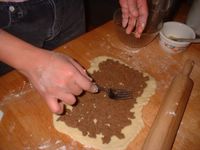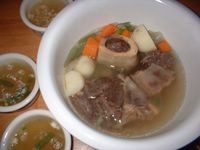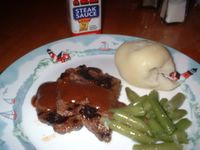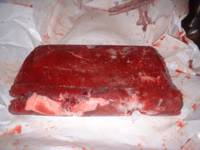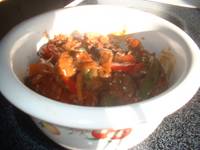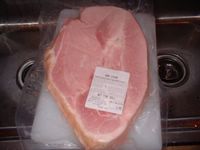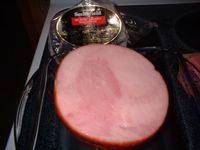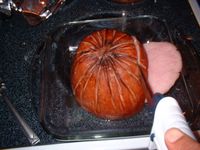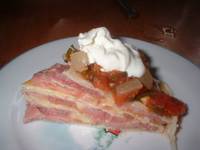I was watching CNN news this morning while folding the laundry. Dr. Sanjay Gupta talked about the Fidget Diet, about people burning calories without having to go to the gym, but just by engaging simple light activities instead of just sitting still, which is what most obese people do. It was backed by scientific studies.
The male newscaster said he was skeptical about it. The woman newscaster said it made sense.
For me, it was just COMMON SENSE.
Well, we burn calories even when we sleep. That's why we have BASAL METABOLIC RATE. That's basically the amount of energy our body uses for MAINTENANCE. Any activity, no matter how light, will burn up additional calory. Of course, the heavier the activity, the more calories burned.
So obese people who find it quite hard to get up from the couch because they are heavy are in a vicious cycle. They eat a lot out of boredom, usually junk food. They have to burn the excess calories but the slightest movement costs so much that they feel tired right away. The lack of even moderate physical activity makes their muscles lax and may also lead to atrophy (secondary to disuse), such that a little exertion is too much for the muscles to handle. It's hard for these people to escape that cycle.
The leaner people are usually so used to moving about. A little gain in weight and they notice right away that they need to move more. A little difficulty in bending because of a thicker fat under the skin becoming more prominent as they bend sends signals of cutting down on food intake to match the level of activity, and of increasing physical activity to mobilize these fat reserves. Since ordinary movement is something that does not take so much of an effort for these leaner people, there is no vicious cycle as I described above. They are not trapped. They simply make a choice to add activity or lessen caloric intake. They usually cannot last long in activities that don't involve much movements. They usually do something else while watching TV, like folding laundry, or just jogging in place. An hour of just sitting still usually results in slight back/neck pain, that they have to shift, stretch, or DO SOMETHING to alleviate the discomfort, even simple things as moving the feet. Any of these simple activities burn calories.
There was a question raised on whether Dr. Gupta is now telling the public that they don't have to work-out in the gym. That was a stupid question.
Working out either in the gym or in the comfort of your home is a personal choice. Some people just don't have the gumption to do something unless they see others do it, or spend a fortune on a program to make them stick to it (sayang ginastos eh), or just don't understand the relationship between their caloric intake and how their body uses that, so they go the gym.
Understanding the relationship between the two takes some intuitive reflection.
I will never forget this one law of physics: For every action, there is a reaction.
The same principle underlies the "Atrophy of Disuse" in medicine/physiology, which explains why the muscles of comatose/paraplegic patients waste away without (passive/active) movement. It is as simple as seeing that muscles are developed in response (reaction) to the amount of stress it is subjected to. The more physical stress, the more it develops. Hence you see these bodybuilders building with their muscles so well-defined and bulky and toned.
Aerobic (Oxygen-requiring) activities such as jogging and dancing will demand more activity for the heart (heart needs to keep pumping hard to distribute enough blood/nutrients/energy to the peripheral areas), and therefore these activities help the heart "tone up" such that getting to a high altitude (which has thinner air and therefore less oxygen) is easier for people used to aerobic activities compared to those who are not.
A long time ago, I have read an article saying that jumping rope helps children build strong bones. I never doubted that, because with every stress you subject those bones (landing on their feet as they jump; muscles pulling them during contraction), these bones, backed by sufficient nutrient supply like calcium and collagen (protein), also develop accordingly.
And developing the muscles better start as early as childhood, to develop in the children that tendency to do something when they have nothing to do. Don't be afraid to give your children heavy tasks; just let them start slowly, from lighter load to heavier ones, so that their muscles develop to an increasing level as time goes by. Never succumb to their tendency to feign tiredness. Don't be guilty if you seem like a slave-driver. Just bear in mind that it is for their own good and they themselves will reap the benefits of physical activities. In this age where a lot of electronic toys mimic outdoor activities or simply lure children into just sitting in front of the TV/computer (which I think won't help the efforts of this government to eradicate the obesity problem and which, in my opinion, should be banned), it is possible to achieve a compromise, like limiting TV hours to max of two per day, and asking the kids to do something physical (like jump rope) first for at least 30 minutes before they can watch TV/play computer games, or encourage them to do some stretching exercises during commercials.
With regards to my children's diet, I let them eat as they feel they should, but I also keep on reminding them to burn off the extra caloric intake with more activities if they plan to eat more than what I think they should. (I usually do this with my first son.) My notion of how much they eat not only depends on how much they move, but also on the needs of their bodies as they grow up (which are taken into consideration by the USDA food pyramid guidelines).
I and my children (youngest is 7) always help one another pile the firewood (which I can only imagine will make many Filipino mothers gasp, probably thinking that it is a pity we can't afford a maid here. On the contrary I am grateful for the lack of maid that I have a better chance of making my children more sensitive to what maids/househelps in the Philippines go through.) ...Then I reward all of us a hearty and healthy meal.
Oh, and a last note: this is also one of the reasons I try to limit my computer time to just 2 hours a day...Oops! I exceeded my limit again!
















